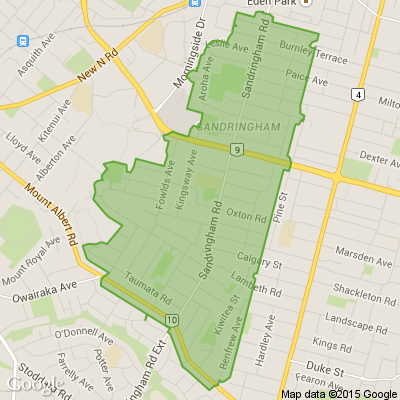Two on the run after man shot and killed in Mt Roskill
Police are hunting two people after they burst into an Auckland home, shooting and killing a man in his 20s and injuring two other people.
A homicide investigation is under way after the man was shot dead in the Glass Rd, Mt Roskill, house about 9.30pm, said Detective Inspector Scott Beard.
"Two armed offenders have entered the address and an altercation has taken place with the occupants inside the house.
"One of the occupants, a man in his 20's, received a gunshot wound and has died at the scene."
Two other people had received non-life threatening injuries and were taken to hospital.
The offenders had fled from the scene and are yet to be located.
Neighbours were told to lock themselves in their house as the incident unfolded.
One resident of a nearby house told the Herald this morning she had heard the police Eagle helicopter hovering at about 6pm.
"Dogs started barking, police sirens were going off and then an officer came running over telling us to lock ourselves inside," she said.
The woman, who didn't want to be named, said she'd been living at the property for 16 years and had never seen anything like this happen on the street before.
A scene guard has been in place overnight and police are carrying out a scene investigation today. Forensics workers arrived at the scene just after 9.30am and were speaking with officers.
Armed police officers are visible at the scene this morning. About 50 metres of the suburban street has been cordoned off with white tape labeled "police emergency" in red.
Two armed officers and two flashing police cars are at either side. A blue search and rescue police tent sits at the far end of the cordoned off street.
A young woman who arrived at the scene this morning said there had been a few domestic incidents at the property and often yelling.
Her parents live in the house opposite and she wanted to comfort them but police wouldn't let her through.
"They are pretty shaken up, everyone is gobsmacked really," said the woman, who did not want to be named.
The property where the incident occurred is owned by Kainga Ora, formerly Housing New Zealand.
Last night a witness told the Herald that one person had died while as many as three others were injured in what they believed was a shooting in Glass Rd.
Of those injured, one person was in a critical condition, and one was in a serious condition, according to St John. Both were taken by ambulance to Auckland City Hospital. A third person suffered minor injuries and did not require hospital treatment.
According to the witness, a dozen armed officers descended on a property on Glass Rd.
A man was seen being rushed from the property on a stretcher and taken to one of three ambulances at the scene.
The road was cordoned off and a police helicopter was circling overhead.
Armed police were last night guarding the scene and workers in forensic suits could be seen at the property.
A police spokesperson confirmed to the Herald they had responded to what was initially believed to be a firearms incident with injuries at 9.30pm.
There would be a heavy police presence in the area and inquiries were ongoing. No arrests had been made last night.
Police are expected to provide further details on the incident this morning.
Anyone with information about this incident, or anyone who saw suspicious activity around the Glass Road area around 9.30pm is urged to contact Police on 105, quoting file number 211224/4140 or call Crime Stoppers anonymously on 0800 555 111.
====================================================
Poll: 🗑️ Would you be keen to switch to a fortnightly rubbish collection, or do you prefer things as they are?
Aucklanders, our weekly rubbish collections are staying after councillors voted to scrap a proposed trial of fortnightly pick-ups.
We want to hear from you: would you be keen to switch to a fortnightly rubbish collection, or do you prefer things as they are?
Keen for the details? Read up about the scrapped collection trial here.

-
82.1% Same!
-
17.9% Would have liked to try something different
Some Choice News!
Many New Zealand gardens aren’t seeing as many monarch butterflies fluttering around their swan plants and flower beds these days — the hungry Asian paper wasp has been taking its toll.
Thanks to people like Alan Baldick, who’s made it his mission to protect the monarch, his neighbours still get to enjoy these beautiful butterflies in their own backyards.
Thinking about planting something to invite more butterflies, bees, and birds into your garden?
Thanks for your mahi, Alan! We hope this brings a smile!

Scam Alert: Fake information regarding December Bonuses from MSD
The Ministry of Social Development is reporting that fake information is circulating about new ‘December bonuses’ or ‘benefit increases’
If you get suspicious communication, please contact Netsafe.








 Loading…
Loading…




